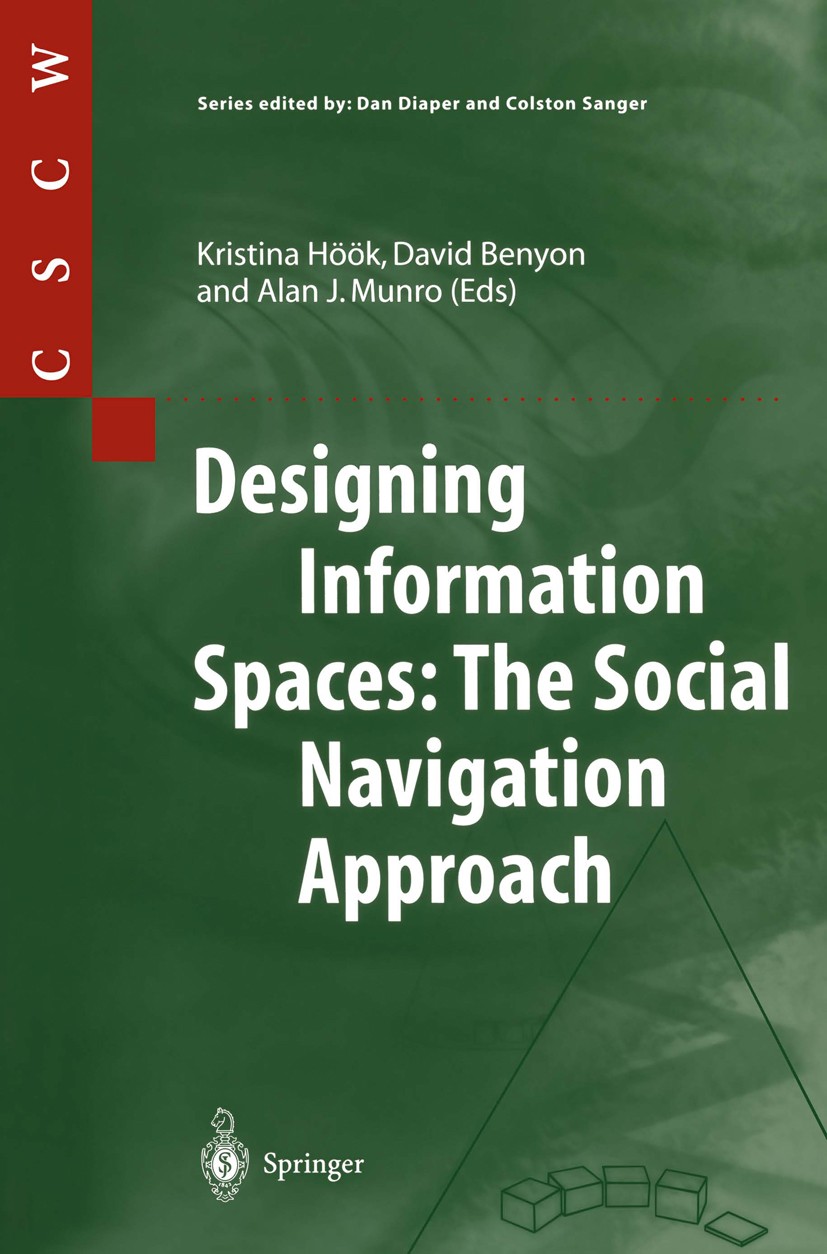| 书目名称 | Designing Information Spaces: The Social Navigation Approach | | 编辑 | Kristina Höök,David Benyon,Alan J. Munro | | 视频video | http://file.papertrans.cn/269/268952/268952.mp4 | | 概述 | This is the only major work covering this important topic.Includes supplementary material: | | 丛书名称 | Computer Supported Cooperative Work | | 图书封面 |  | | 描述 | That‘s a look at an array of social proxies. The purpose was to make it clear that the concept of social proxy is quite general. Social proxies can be designed to support a wide range of on-line interactions, whether they involve conversation or not. They may be synchronous or asynchronous, and they may be associated with activities which are an end in them selves (e. g. auctions), or activities which are simply a means to an end (e. g. waiting in queues). We believe that by providing a shared represen tation of the activity in which participants are involved, social proxies can help create shared expectations, shared experiences, and can serve as a resource which participants can use to structure their individual and collective interactions. That is, at least, our claim. However, it is important to note that, except for the first, the proxies described so far are concept pieces, meaning that they haven‘t been implemented and deployed to real situations. Now, however, we will turn to an implemented system, and look at a real example. 1. 4 Experience: The Babble System In the previous section we introduced the concept of social proxies and discussed examples illustrating the wide | | 出版日期 | Book 2003 | | 关键词 | HCI; Intelligent User Interfaces; Virtual Environments; WebP; architecture; human-computer interaction (H | | 版次 | 1 | | doi | https://doi.org/10.1007/978-1-4471-0035-5 | | isbn_softcover | 978-1-85233-661-5 | | isbn_ebook | 978-1-4471-0035-5Series ISSN 1431-1496 | | issn_series | 1431-1496 | | copyright | Springer-Verlag London 2003 |
The information of publication is updating

|
|
 |Archiver|手机版|小黑屋|
派博传思国际
( 京公网安备110108008328)
GMT+8, 2025-12-19 05:43
|Archiver|手机版|小黑屋|
派博传思国际
( 京公网安备110108008328)
GMT+8, 2025-12-19 05:43


